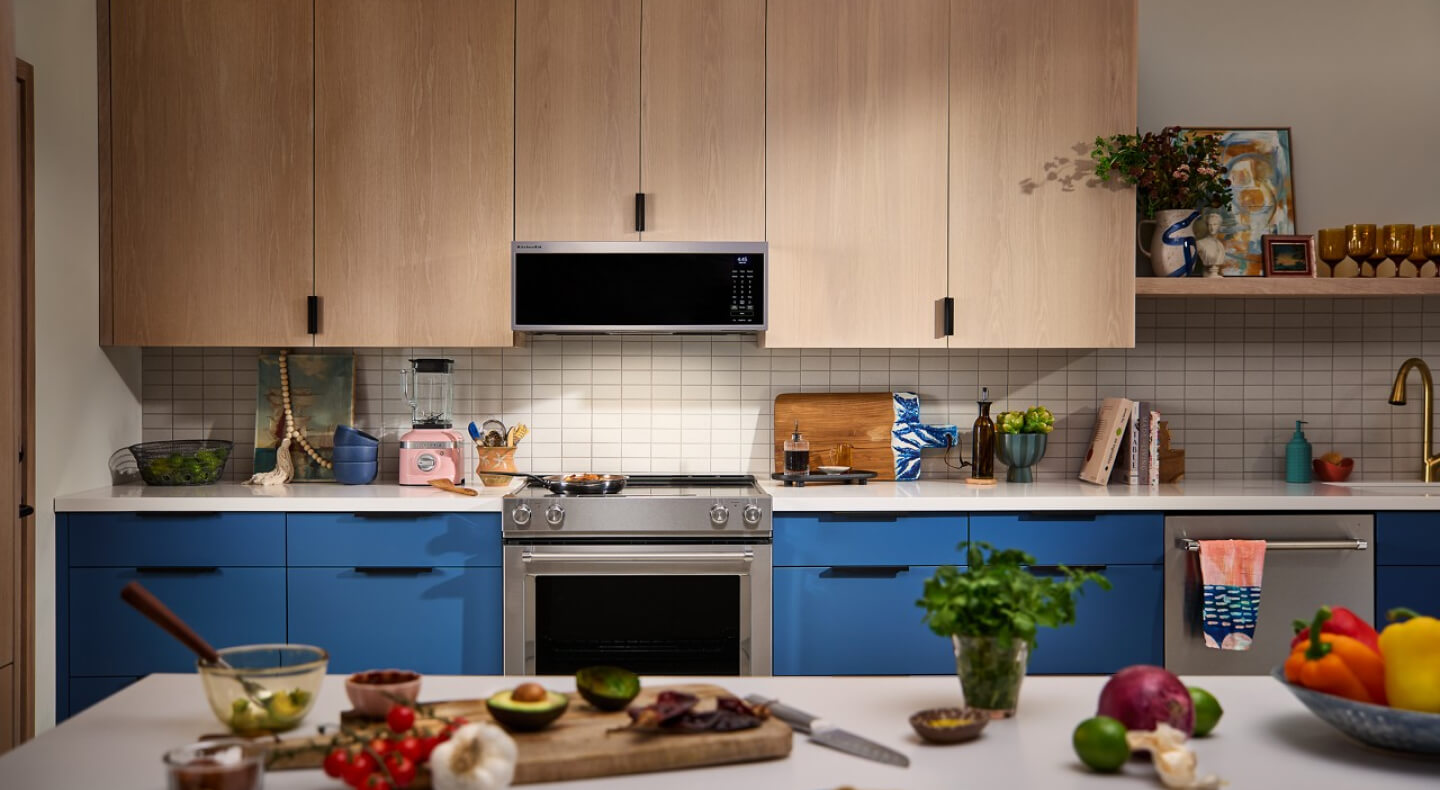
MICROWAVE SENSOR COOKING: SETTINGS & TIPS
Sensor cooking in microwaves can take the guesswork out of cooking by automatically adjusting time and power levels, helping to ensure your dishes come out the way you anticipate. Whether you're steaming vegetables, reheating leftovers or experimenting with quick desserts, sensor cooking is a tool that can add convenience and reliability to your culinary creativity.
WHAT IS SENSOR COOKING ON A MICROWAVE OVEN?
Sensor cooking on a microwave oven uses built-in sensors to detect moisture that releases from food as it cooks. This setting is meant to adjust both cooking time and power levels, which may result in more even heating and help to prevent over or undercooking.
Microwave sensor modes monitor the cooking process, helping to ensure your meals are heated through, as well as helping to avoid cold spots or scorched edges.


MICROWAVE SENSOR COOKING SETTINGS
Available microwave sensor cooking settings will vary by model. Some popular sensor cooking settings include:
Sensor Steam/Simmer Cook Cycle: allows precise steaming or simmering based on the food type and doneness level selected.
Reheat: This function may use sensors to detect moisture from foods as they warm
Popcorn: Senors monitor cooking progress and adjust time as needed. Microwave may sense a 3-3.5 oz bag
- Infrared Sensor Defrost: Monitors heat levels and ends the cycle before cooking starts
MICROWAVE SENSOR COOKING TIPS
Try these suggestions to help achieve optimal results with sensor cooking:
Proper coverage: Use a loose-fitting, microwave-safe lid that allows some moisture to escape while keeping heat in.
Clean and dry: Start with a dry microwave interior and dry cooking containers for better moisture detection.
Room temperature start: Let your microwave adjust to room temperature for at least two minutes before using sensor cooking.
Even distribution: Place food evenly in your container to help sensors monitor cooking.


4 MICROWAVE SENSOR COOKING IDEAS
Your microwave's sensor cooking features can help with many tasks, from steaming fresh vegetables and defrosting meats to softening butter for baking. Here are some ways to use sensor cooking in your kitchen with features found on select KitchenAid® microwaves.

1. STEAMING VEGETABLES
Some good options for steaming in your microwave include broccoli, butternut squash, carrots and green beans. The sensor helps monitor moisture levels while cooking. Select KitchenAid brand microwaves include a setting to cook your vegetables by selecting “Cook” and then the type of food, in this case, frozen or fresh vegetables.

2. SOFTENING BUTTER
Use your microwave's sensor settings to help soften butter for baking and spreading. On select KitchenAid brand microwaves, the Infrared Sensor Soften/Melt Mode provides intuitive assistance to gently soften butter and cream cheese and smoothly melt chocolate and butter.

3. DEFROSTING MEAT
Use Infrared Sensor Defrost on select KitchenAid brand microwaves to help thaw meats and other frozen foods without cooking the edges. On some microwave models, the sensor monitors the defrosting process while adjusting time and power levels based on the food's changing temperature. Place frozen items like chicken breasts, ground beef or fish on a microwave-safe dish and select the sensor defrost setting for your specific food type.

4. BAKED POTATOES
Make baked potatoes in your microwave for a quick side dish or meal base. The sensor adjusts cooking time based on potato size and moisture content. Place washed potatoes on a microwave-safe dish, pierce several times with a fork, and let the sensor settings help you create a tender potato ready for your favorite toppings like butter, cheese or sour cream.

